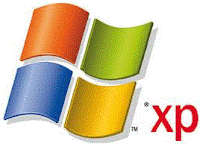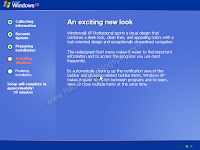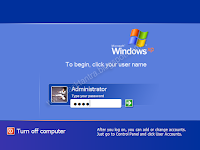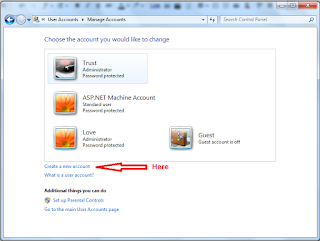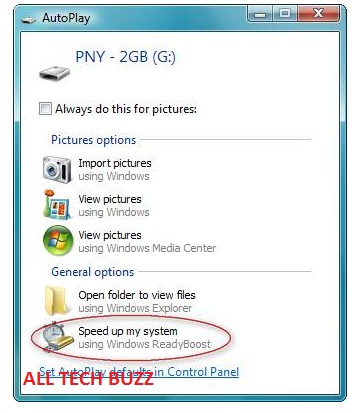This procedure demonstrates how to install Windows XP Professional.
The procedure to install Windows XP home edition is very similar to
the professional edition. Since Windows XP Pro is more advanced
operating system, it will be used to demonstrate the installation
procedure.
The best way install Windows XP is to do a clean install. It
is not difficult to perform a clean installation. Before you perform
the installation I recommend that you check Windows XP Compatibility List
to ensure that your hardware is supported by XP. If your hardware is
not on the compatibility list you can check your hardware manufactures
website to download the drivers for Windows XP. Save all the
necessary drivers onto floppy disks or CD before you start the
installation.
All versions of Windows XP CD are bootable. In order to boot
from CD/DVD-ROM you need to set the boot sequence. Look for the boot
sequence under your BIOS setup and make sure that the first boot
device is set to CD/DVD-ROM. You can then perform the following steps to
install Windows XP:
Step 1 - Start your PC and place your
Windows XP CD in your CD/DVD-ROM drive. Your PC should automatically
detect the CD and you will get a message saying "Press any key to boot
from CD". Soon as computer starts booting from the CD your will get
the following screen:
Step 2 - At this stage it will
ask you to press F6 if you want to install a third party Raid or SCSI
driver. If you are using a an IDE Hard Drive then you do not need to
press F6. If you are using a SCSI or SATA Hard drive then you must press
F6 otherwise Windows will not detect your Hard Drive during the
installation. Please make sure you have the Raid drivers on a floppy
disk. Normally the drivers are supplied on a CD which you can copy to a
floppy disk ready to be installed. If you are not sure how to do this
then please read your motherboard manuals for more information.
Step 3 - Press S to Specify that you want to install additional device.
Step 4 - You will be asked to insert the floppy disk with the Raid or SCSI drivers. Press enter after you have inserted the disk.
Step 5 - You will see a list of Raid drivers for your HDD. Select the correct driver for your device and press enter.
Step 6 - You will then get a
Windows XP Professional Setup screen. You have the option to do a new
Windows install, Repair previous install or quit. Since we are doing a
new install we just press Enter to continue.
Step 7 - You will be presented with the End User Licensing Agreement. Press F8 to accept and continue
Step 8 - This step is very
important. Here we will create the partition where Windows will be
installed. If you have a brand new unformatted drive you will get a
screen similar to below. In our case the drive size is 8190MB. We can
choose to install Windows in this drive without creating a partition,
hence use the entire size of the drive. If you wish to do this you can
just press enter and Windows will automatically partition and format the
drive as one large drive.
However for this demonstration I will create two
partition. The first partition will be 6000MB (C: drive) and second
partition would be 2180MB (E: drive). By creating two partition we can
have one which stores Windows and Applications and the other which
stores our data. So in the future if anything goes wrong with our
Windows install such as virus or spyware we can re-install Windows on C:
drive and our data on E: drive will not be touched. Please note you can
choose whatever size partition your like. For example if you have 500GB
hard drive you can have two partition of 250GB each.
Press C to create a partition.
Step 8 - Windows will show the
total size of the hard drive and ask you how much you want to allocate
for the partition you are about to create. I will choose 6000MB. You
will then get the screen below. Notice it shows C: Partition 1 followed
by the size 6000 MB. This indicates the partition has been created. We
still have an unpartitioned space of 2189MB. Next highlight the
unpartitioned space by pressing down the arrow key. Then press C to
create another partition. You will see the total space available for the
new partition. Just choose all the space left over, in our case 2180MB.
 |
| Add caption |
Step 9 - Now you will see both
partition listed. Partition 1 (C: Drive) 6000MB and Partition 2 (E:
Drive) 2180MB. You will also have 8MB of unpartitioned space. Don't
worry about that. Just leave it how its is. Windows normally has some
unpartitioned space. You might wonder what happened to D: drive. Windows
has automatically allocated D: drive to CD/DVD-ROM.
Select Partition 1 (C: Drive) and press Enter.
Step 10 - Choose format the
partition using NTFS file system.This is the recommended file system.
If the hard drive has been formatted before then you can choose quick
NTFS format. We chose NTFS because it offers many security features,
supports larger drive size, and bigger size files.
Windows will now start formatting drive C: and start copying setup files as shown on the two images below :
Step 11 - After the setup has completed copying the
files the computer will restart. Leave the XP CD in the drive but this
time DO NOT press any key when the message "Press any key to boot from
CD" is displayed. In few seconds setup will continue. Windows XP
Setup wizard will guide you through the setup process of gathering
information about your computer.
Step 12 - Choose your region and language.
Step 13 - Type in your name and organization.
Step 14. Enter your product key.
Step 15 - Name the computer, and enter an Administrator password. Don't forget to write down your Administrator password.
Step 16 - Enter the correct date, time and choose your time zone.
Step 17 - For the network setting choose typical and press next.
Step 18 - Choose workgroup or domain name.
If you are not a member of a domain then leave the default settings and
press next. Windows will restart again and adjust the display.
Step 19 - Finally Windows will start and present you with a Welcome screen. Click next to continue.
Step 20 - Choose 'help protect my PC by turning on automatic updates now' and press next.
Step 21 - Will this computer connect to the
internet directly, or through a network? If you are connected to a
router or LAN then choose: 'Yes, this computer will connect through a local area network or home network'. If you have dial up modem choose: 'No, this computer will connect directly to the internet'. Then click Next.
Step 22 - Ready to activate Windows? Choose yes
if you wish to active Windows over the internet now. Choose no if you
want to activate Windows at a later stage.
Step 23 - Add users that will sign on to this computer and click next.
Step 24 - You will get a Thank you screen to confirm setup is complete. Click finish.
Step 25. Log in, to your PC for the first time.
Step 26 - You now need to check the device
manager to confirm that all the drivers has been loaded or if there
are any conflicts. From the start menu select Start -> Settings -> Control Panel. Click on the System icon and then from the System Properties window select the Hardware tab, then click on Device Manager.
If there are any yellow exclamation mark "!"
next to any of the listed device, it means that no drivers or
incorrect drivers has been loaded for that device. In our case we have a
Video Controller (VGA card) which has no drivers installed.
Your hardware should come with manufacturer
supplied drivers. You need to install these drivers using the
automatic setup program provided by the manufacturer or you need to
manually install these drivers. If you do not have the drivers, check
the manufacturers website to download them.
To install a driver manually use the following procedure:
(a) From the device manager double click on the device containing the exclamation mark.
(b) This would open a device properties window.
(c) Click on the Driver tab.
(d) Click Update Driver button. The Wizard for updating device driver pops up as shown below:
You now get two options. The first option
provides an automatic search for the required driver. The second
option allows you to specify the location of the driver. If you don't
know the location of the driver choose the automatic search which
would find the required driver from the manufacturer supplied CD or
Floppy disk. Windows would install the required driver and may ask you
to restart the system for the changes to take affect. Use this
procedure to install drivers for all the devices that contain an
exclamation mark. Windows is completely setup when there are no more
exclamation marks in the device manager.




